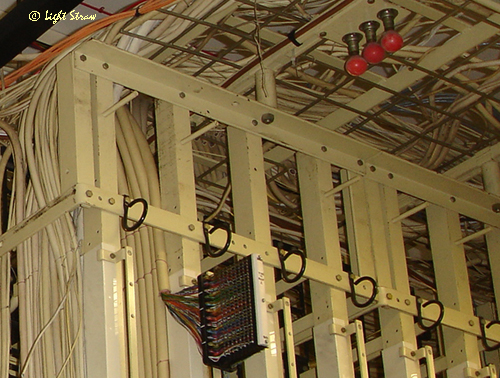 |
In 1957 a Headquarters Joint Committee studying the lighting standards for Post Office buildings, had noted the poor reflectivity of the grey surfaces and had recommended the use of fluorescent lighting. |
In 1957 a Headquarters Joint Committee studying the lighting standards for Post Office buildings, had noted the poor reflectivity of the grey surfaces and had recommended the use of fluorescent lighting. The Ministry of Works was trying out modern colour finishes to walls and ceilings and thus a field trial of cream coloured racks and dust covers took place in Coppermill exchange, London in 1958. Together with the new fluorescent rack lighting, the overall result was so successful that Light Straw was adopted for all new exchanges and extensions as well as for automatic telex equipment.
Exchange Racking
In Public exchanges, for 2000 type equipment there were:
Two standard rack sizes:
|
|
The plan below shows the spacings between a suite of type A racks ( '= feet, ''= inches) and the positioning of the lighting, prior to the introduction of fluorescent fittings.
| |< | 22' 6" Suite length | >| | |||||
| 4' 6" racks | 4' 6" racks | 4' 6" racks | 4' 6" racks | 4' 6" racks | }1' 2" | ||
| Apparatus | P | Gangway | P | ] | |||
| P | P | P | ]2' 51/4" clear | ||||
| 4' 6" racks | 4' 6" racks | 4' 6" racks | 4' 6" racks | 4' 6" racks | |||
| Wiring | C | Gangway | C | }1' 63/4" clear | |||
| 4' 6" racks | 4' 6" racks | 4' 6" racks | 4' 6" racks | 4' 6" racks | |||
| Apparatus | P | Gangway | P | ]2' 51/4" clear | |||
| P | P | P | ] | ||||
| 4' 6" racks | 4' 6" racks | 4' 6" racks | 4' 6" racks | 4' 6" racks | }1' 2" |
P = 9'' Parabolic Reflector Lamp
C = 10'' Circular Reflector Lamp
Travelling Ladders
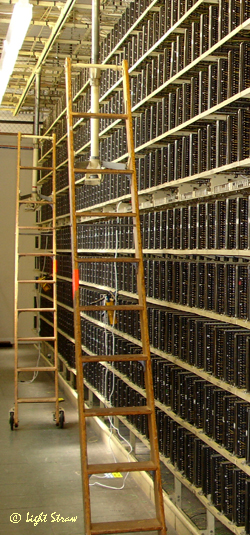 |
For easy, safe access to all levels of equipment, the travelling ladders provided a convenient solution. |
Lighting in the apparatus rack gangways was by filament lamps in 9 inch parabolic reflectors and 10 inch circular reflector lamps in the wiring gangways. To aid maintenance of equipment in-situ, the use of inspection lamps plugged into the exchange battery jacks was a way of overcoming the poor lighting.
In the 1950s, plastic sheathed cables became available and cream colour cables were specified for use in exchange work and by applying a matching cream finish to the overhead cable supports, the brighter colours gave improved reflectivity of the available lighting.
In 1957 a Headquarters Joint Committee studying the lighting standards for Post Office buildings, had noted the poor reflectivity of the grey surfaces and had recommended the use of fluorescent lighting. The Ministry of Works were trying out modern colour finishes to walls and ceilings and thus a field trial of cream coloured racks and dust covers took place in Coppermill exchange, London in 1958.
Together with the new fluorescent rack lighting, the overall result was so successful that Light Straw was adopted for all new exchanges and extensions as well as for automatic telex equipment. It was expected that the light colour would show dust and dirt more readily and that the appearance of the exchange equipment would deteriorate more quickly. However, it was found that the lighter surroundings lead to better cleanliness and pride in the equipment, as well as improvements in maintenance. ( Adapted from Post Office Telecommunications Journal, Summer 1961).
Bob Oborne explains about his work in Dorking ATE circa 1964
"...any new cabling was of course now carried out using the modern light straw PVC cables, but all connections were still cut, stripped, terminated and soldered. There were also some earlier PVC cables with battleship grey sheathings. The wire wrapping gun had not quite yet made an appearance, and insulation displacement connectors for cabling came years later. New equipment from the GPO stores was still appearing in light battleship grey, with some arriving in light straw. Any new equipment provided by the manufacturer's contract installers was all in light straw. In our work we sometimes fabricated miscellaneous equipment racks from angled steel that had been cut to size by the regional workshops and fitted new cable racking. If the surrounding equipment, as well as that to be fitted, was all battleship grey, then we painted the iron work and new cable racking that colour also. If it was light straw, then naturally we used light straw paint to match."
This was not the case in all exchanges and often the older racks were left grey and new light straw ones fitted in an adjacent gangway or even in the same suite. Thus began the mix of grey and cream racks side by side. And as Strowger spares became limited, in the Eighties and Nineties, a mixture of grey and cream equipment covers could be found not just on the same rack, but on the same shelf!
TEP Types
Paint Colours
Very early equipments had a black finish which lead on to the introduction of...
Light Battleship Grey
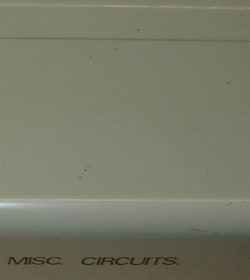 |
British Standard Specification BSS 381 Colour No.31 Light Battleship Grey |
 |
British Standard Colour BSC No.384 Light Straw |
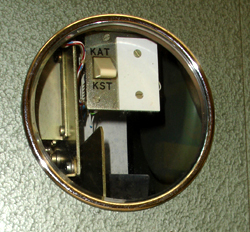 |
Colour trials were not only limited to cream. In 1961 a green hammer finish was specified for the first electronic exchange in Highgate Wood. The Printer, Meter Check developed at about the same time was also produced in a hammer finish. |
Telecom Blue/Grey
 |
From about 1980, 'telecom' grey/blue was the colour of the System X exchange cabinets. |
Modern Day Grey
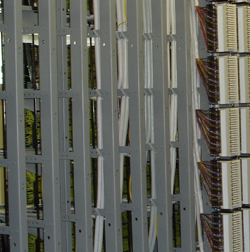 |
Modern day practice is for plated/anodised racking (in grey!) and equipments generally cream/white as determined by the supplier. |
Under later versions of the British Standard Specification for colours for identification, coding and special purposes - BS 381C
Light Straw was shade 384; Post Office Red was 538 and Postal Service Red was 539. Light Battleship Grey was 631. The current version of the standard is BS 381C: 1996 which specifies the names and illustrates 91 standard colours.
See also Paint Colours in the TEC section page.
Office Areas
This section would not be complete without a mention of some of the floor coverings in the rooms and offices adjacent to the equipment rooms.
Lino
 |
During the 1970s, green lino tiles were used on office landings. The same colour was used as the working surface of free-standing, apparatus floor, pedestal cupboards. |
| Carpets | |
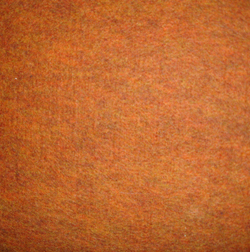 |
In the early 1980s, office upgrades saw lino (for the first time) being replaced by carpet. The sample opposite is a very short hard-wearing pile, which typically would have been glued to a concrete floor. |
All logos and trade marks are the property of their respective owners and are used on the Light Straw site(s) for review only. Students and researchers are recommended to make their own independent enquiries as to the accuracy of the information contained therein.
